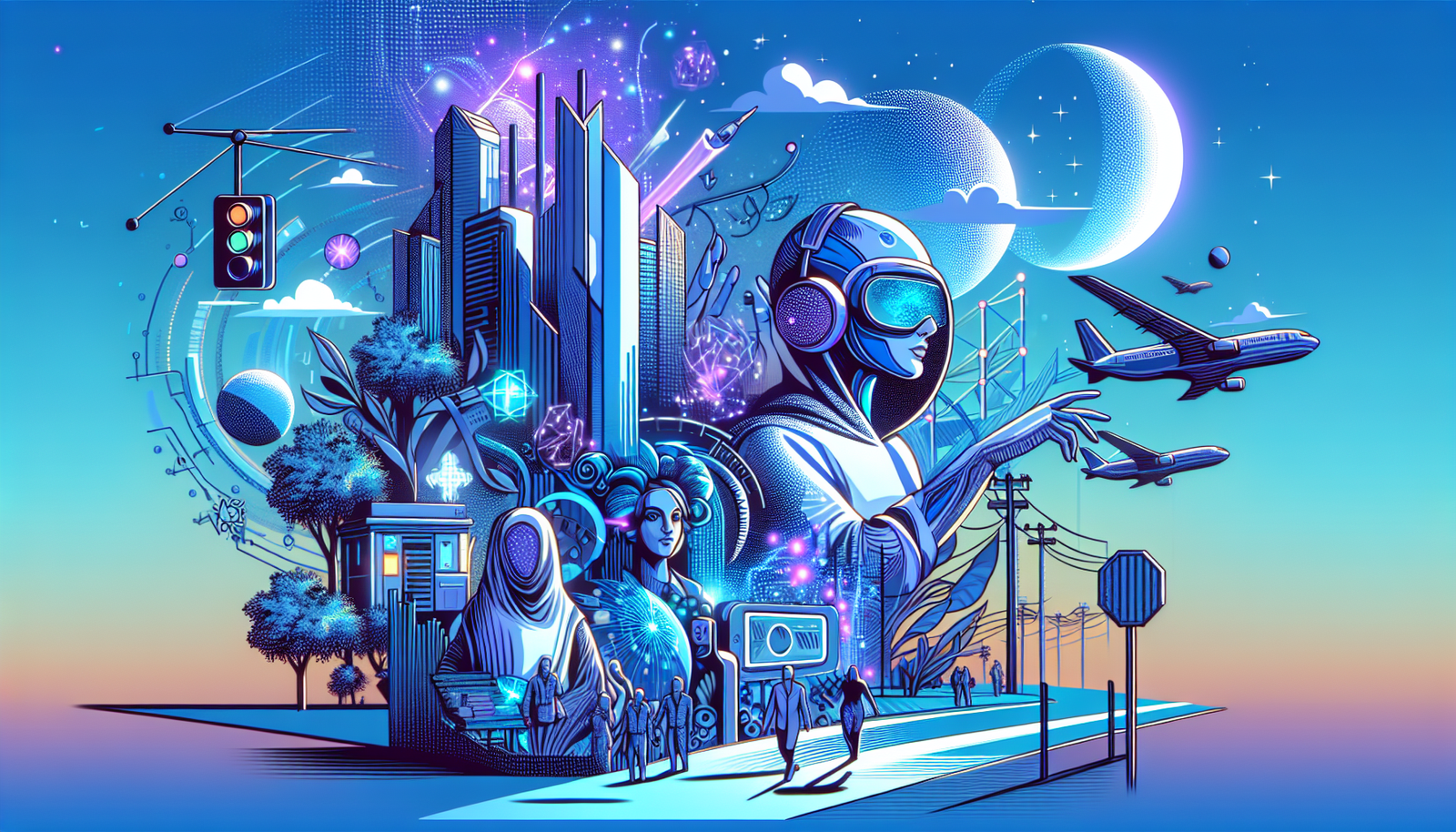The controversy erupts around the AI-generated video titled *’Trump in Gaza’*, broadcast by the former American president. Presented as a satirical work, this video illustrates a fanciful vision of the Palestinian enclave, transformed into a luxurious resort. The impact of AI on public perception proves to be deeply troubling, questioning the boundaries between reality and fiction.
Such a production highlights the stakes of disinformation in the contemporary media landscape. The surreal images projected by Donald Trump merge political provocation and digital creativity, sparking intense global debate. This phenomenon questions the codes of political satire in the digital age, thus revealing unsuspected dynamics.
Release of the video ‘Trump Gaza’
An AI-generated video, titled ‘Trump Gaza’, has sparked a global outcry. Released by the former American president, this visual work presents a fanciful and grotesque version of the Gaza Strip, supposedly evoking a luxurious resort. The broadcast on the platform Truth Social quickly elicited reactions from the media and political observers.
Origin and purpose of the video
The creation of this video is part of a project presented as political satire. The California studio EyeMix Visuals claimed its authorship on social media, emphasizing that it aimed to make people laugh rather than provoke outrage. Nevertheless, the public reception has been largely negative, both from observers and political actors.
International reactions
Reactions to the video ‘Trump Gaza’ quickly began to pour in. Numerous commentators reported a mix of confusion and dismay at this distorted representation of the Palestinian territory. The project to transform Gaza into a place of entertainment and luxury does not respect the political, humanitarian, and historical complexities that this region faces.
A large segment of social media users criticized this work, labeling it as surrealist propaganda. Political figures also expressed their outrage, highlighting the dangerous implications of such content at a time marked by heightened geopolitical tensions.
Impact of AI technologies on public perception
The dissemination of AI-generated content raises broader questions regarding disinformation and its effects on the perception of contemporary events. The emergence of such technologies transforms the media landscape, making it more difficult to distinguish between reality and fiction. Numerous experts agree that this complicates efforts to maintain accurate information within the public debate.
The images and videos generated by AI can exacerbate crises of trust toward the media, an asset of populist discourse. The virality of ‘Trump Gaza’ underscores how political satire, even if initially devoid of malicious intent, can be interpreted as a tool of disinformation.
Voices of artistic criticism
The artists involved in the creation of ‘Trump Gaza’ defend their approach by describing it as satire. They argue that the aim was to raise questions about the power and influence of contemporary symbols through an exaggerated work. However, this justification has not sufficed to quell criticism regarding the trivialization of such a serious subject as the situation in Gaza.
The digital age and its consequences
The release of ‘Trump Gaza’ represents a turning point in the use of AI technologies in the fields of art and communication. It questions the responsibilities of narrators, particularly in the context of creating potentially sensitive content. The political ramifications of such videos, especially when they concern conflict zones, should not be underestimated.
The issue of regulating AI-generated content is now more relevant than ever. With the rise of disinformation, discussions on the necessity of new legislations and verification standards have intensified, both among legislators and the platforms themselves.
In the face of such media confusion, it has become essential to question the mechanisms behind information production and their impact on public discourse. Content creators, just like consumers, must navigate cautiously through this new digital landscape.
Frequently asked questions about the AI video ‘Trump in Gaza’
What is the origin of the AI video ‘Trump Gaza’?
The video was created by the California studio EyeMix Visuals, which presented it as a satirical work highlighting a fictional vision of Gaza transformed into a resort.
What message does the video ‘Trump Gaza’ try to convey?
The video aims to mock American diplomacy by presenting a surreal image of Gaza, featuring extravagant elements like golden statues of Trump, to spark discussions on power and the irony of certain political proposals.
Why did the video ‘Trump Gaza’ elicit so many reactions?
It provoked a worldwide shockwave due to its provocative content and distorted representation of a conflict zone, leading to criticism of the use of AI for political purposes.
Is the video really a political satire?
Although the creator presents it as satire, many believe it missed its target and is perceived by some as a form of propaganda; it highlights the consequences of using AI in content creation.
Who are the personalities featured in the video ‘Trump Gaza’?
The video features images of personalities like Donald Trump and Elon Musk in humorous situations, reinforcing the absurdity of the content while amplifying social criticism.
Do some people think this video could be misleading?
Yes, the video raises major concerns about disinformation in the digital age, where such AI-generated creations can influence public perceptions and distract from real political issues.
What role does artificial intelligence play in creating content like ‘Trump Gaza’?
Artificial intelligence allows for the generation of innovative visual and narrative content, but it also raises ethical issues regarding the truthfulness and impact of these creations on the public.
How are the media and experts reacting to the video ‘Trump Gaza’?
The media and experts have expressed both outrage and concern, analyzing the implications of such content on public perception and the responsibility of content creators.
What are the consequences of a video like ‘Trump Gaza’ on political news?
Such videos can fuel debates and political tensions, influence public opinions, and distort the understanding of geopolitical realities through their use of provocative images.






